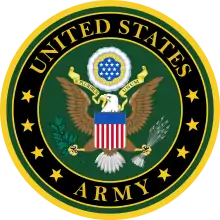Sixth United States Army Group
The 6th United States Army Group was an Allied Army Group that fought in the European Theater of Operations during World War II. Made up of field armies from both the United States Army and the French Army, it fought in France, Germany, Austria, and, briefly, Italy. Also referred to as the Southern Group of Armies, it was established in July 1944 and commanded throughout its duration by General Jacob L. Devers.
| Sixth United States Army Group | |
|---|---|
 Sixth Army Group Shoulder Sleeve Insignia | |
| Active | 1944–45 |
| Country | |
| Branch | |
| Type | Army group |
| Role | Army Group Headquarters |
| Size | c. 700,000 officers and men:[lower-alpha 1] Seventh U.S. and First French Armies |
| Part of | Allied Expeditionary Force |
| Engagements | World War II |
| Commanders | |
| Notable commanders | Jacob L. Devers |
In a lead role in Operation Undertone, its Seventh Army fought its way across the Rhine into Germany, captured Nuremberg and then Munich. Finally it crossed the Brenner Pass and made contact with the US Fifth Army at Vipiteno, Italy.[3]
History
The Sixth Army Group was originally created in Corsica, France (specifically activated on 29 July 1944[4]) as "Advanced Allied Force HQ", a special headquarters within AFHQ (the headquarters of Henry Maitland Wilson, the Supreme Commander Mediterranean Theatre) commanded by Lieutenant General Jacob L. Devers. Its initial role was to supervise the planning of the combined French and American forces which invaded southern France in Operation Dragoon and provide liaison between these forces and AFHQ.[5][6] Dragoon was the operational responsibility of the Seventh United States Army commanded by Lt. Gen. Alexander Patch.[5] Available to Patch were three corps (US VI Corps and French I and II Corps) and 24,000 Maquis of the Forces Francaises de l'Interieur.[6] The two French corps constituted French Army B commanded by Général Jean de Lattre de Tassigny[7] which was later renamed French First Army. Although Sixth Army Group Headquarters was officially activated on 1 August, it consisted of only the personnel of the Advanced Detachment AFHQ and, for reasons of security, retained the detachment title. The Advanced Detachment headquarters on Corsica had no command or operational duties and functioned primarily as a liaison and coordinating agency while preparing itself for the day it would become operational in France as Sixth Army Group headquarters.[4]
Devers' headquarters remained subordinate to AFHQ during the invasion and in the weeks immediately afterwards while operational control of the troops on the ground resided with Patch until his forces linked near Dijon, France with Twelfth United States Army Group's Third Army advancing from the west after breaking out of the Normandy beachhead. At this time, on 15 September, Devers' headquarters was designated Sixth Army Group to take operational control of Seventh Army and French Army B and came under the overall command of General Dwight D. Eisenhower, the Supreme Commander at SHAEF (Supreme Headquarters, Allied Expeditionary Forces).[8]
In late 1944 and early 1945 the Sixth Army Group was involved in fierce fighting in the Alsace repelling the German advance during Operation Nordwind and subsequent pitched engagements closing off the Colmar Pocket. The 63rd Infantry Division was the first Seventh Army unit to cross the Siegfried Line, and the first to get an entire division through it. The 3rd Infantry Division suffered the highest casualty count of all US divisions, with over 27,000 casualties.
The Army Group later advanced through Bavaria, and eventually into western Austria in the waning days of the war. Elements of Sixth Army Group linked up south of the Brenner Pass on 4 May 1945 with troops of the Fifth United States Army of the Allied 15th Army Group advancing north from Italy.[3]
After the end of the war the U.S. Seventh Army, remained as an occupation and defensive force in southern Germany for many decades. It also occupied part of Austria until that country was released from occupation in the mid-1950s.
Order of Battle – 8 May 1945
Order of battle shifted frequently in the Sixth Army Group, but accelerated dramatically during its late-war push through southern Bavaria into the Austrian Alps to head off German establishment of a National Redoubt and close off passes to Nazi escape. Order of Battle on 8 May represents a significantly different disposition in some instances than in the weeks and even days leading up to it.
 6th Army Group – General Jacob L. Devers
6th Army Group – General Jacob L. Devers
 Seventh Army – Lieutenant General Alexander M. Patch
Seventh Army – Lieutenant General Alexander M. Patch
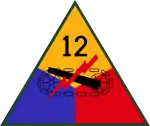 12th Armored Division – Major General Roderick R. Allen
12th Armored Division – Major General Roderick R. Allen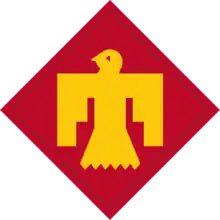 45th Infantry Division – Major General Robert T. Frederick
45th Infantry Division – Major General Robert T. Frederick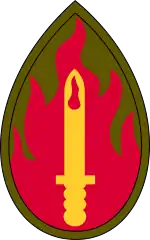 63rd Infantry Division – Major General Louis E. Hibbs
63rd Infantry Division – Major General Louis E. Hibbs 100th Infantry Division – Major General Withers A. Burress
100th Infantry Division – Major General Withers A. Burress VI Corps – Major General Edward H. Brooks
VI Corps – Major General Edward H. Brooks
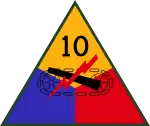 10th Armored Division – Major General William H. H. Morris, Jr.
10th Armored Division – Major General William H. H. Morris, Jr. 44th Infantry Division – Major General William F. Dean
44th Infantry Division – Major General William F. Dean 103rd Infantry Division – Major General Anthony C. McAuliffe
103rd Infantry Division – Major General Anthony C. McAuliffe
 XV Corps – Major General Wade H. Haislip
XV Corps – Major General Wade H. Haislip
.svg.png.webp) 3rd Infantry Division – Major General John W. O'Daniel
3rd Infantry Division – Major General John W. O'Daniel 20th Armored Division – Major General Orlando Ward
20th Armored Division – Major General Orlando Ward 42nd Infantry Division – Major General Henry J. Collins
42nd Infantry Division – Major General Henry J. Collins 86th Infantry Division – Major General Harris M. McLaskey
86th Infantry Division – Major General Harris M. McLaskey
 XXI Corps – Major General Frank W. Milburn
XXI Corps – Major General Frank W. Milburn
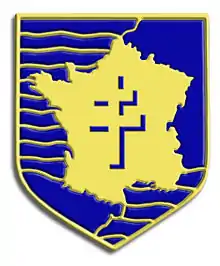 French 2nd Armored Division – Major General Philippe Leclerc
French 2nd Armored Division – Major General Philippe Leclerc 36th Infantry Division – Major General John E. Dahlquist
36th Infantry Division – Major General John E. Dahlquist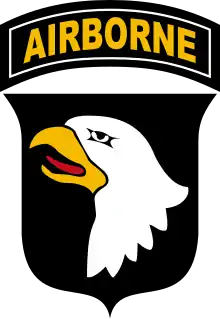 101st Airborne Division – Major General Maxwell D. Taylor
101st Airborne Division – Major General Maxwell D. Taylor
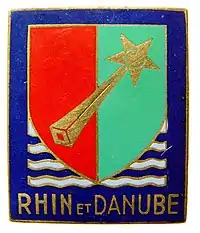 French First Army – General Jean de Lattre de Tassigny
French First Army – General Jean de Lattre de Tassigny
- French 1st Corps – Lieutenant General Antoine Béthouart
 French 2nd Moroccan Infantry Division – Brigadier General François de Linarès
French 2nd Moroccan Infantry Division – Brigadier General François de Linarès- French 4th Moroccan Mountain Division – Major General Rene de Hasdin
 French 9th Colonial Division – Brigadier General Jean-Étienne Valluy
French 9th Colonial Division – Brigadier General Jean-Étienne Valluy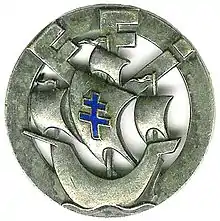 French 10th Infantry Division – Brigadier General Pierre Billotte
French 10th Infantry Division – Brigadier General Pierre Billotte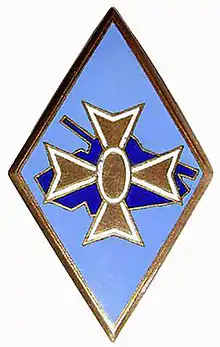 French 1st Armored Division – Brigadier General Aime Sudre
French 1st Armored Division – Brigadier General Aime Sudre
- French 2d Corps – Lieutenant General Joseph de Goislard de Monsabert
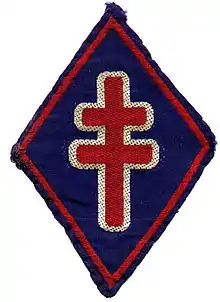 French 1st Motorised Infantry Division – Brigadier General Pierre Garbay
French 1st Motorised Infantry Division – Brigadier General Pierre Garbay French 1st Infantry Division – Brigadier General Jean Callies
French 1st Infantry Division – Brigadier General Jean Callies French 3rd Algerian Infantry Division – Major General Augustin Guillaume
French 3rd Algerian Infantry Division – Major General Augustin Guillaume French 14th Infantry Division – Brigadier General Raoul Salan
French 14th Infantry Division – Brigadier General Raoul Salan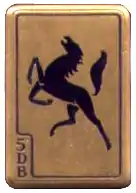 French 5th Armored Division – Brigadier General Guy Schlesser
French 5th Armored Division – Brigadier General Guy Schlesser
- French 1st Corps – Lieutenant General Antoine Béthouart
- Detachment Army of the Alps – Lieutenant General Paul Doyen
 French 27th Infantry Division – Colonel Jean Valette d'Osia
French 27th Infantry Division – Colonel Jean Valette d'Osia
Citations and notes
- Zaloga, "Downfall 1945: the Fall of Hitler's Third Reich" p. 28
- Cirillo p. 53, Retrieved 16 August 2018.
- Fifth Army History • Race to the Alps, Chapter VI : Conclusion "On 3 May the 85th and 88th [Infantry] Divisions sent task forces north over ice and snow 3 feet deep to seal the Austrian frontier and to gain contact with the American Seventh Army, driving southward from Germany. The 339th Infantry [85th Division] reached Austrian soil east of Dobbiaco at 0415, 4 May; the Reconnaissance Troop, 349th Infantry [88th Division], met troops from [103rd Infantry Division] VI Corps of Seventh Army at 1051 at Vipiteno, 9 miles south of Brenner."
- Clarke & Smith 1993, p. 30.
- Clarke & Smith 1993, p. 28.
- Jackson, pp. 176 to 178
- Jackson, p. 176 (footnote)
- Clarke & Smith 1993, p. 224.
References
- Clarke, Jeffrey J.; Smith, Robert Ross (1993). Riviera to the Rhine. United States Army in World War II: European Theater of Operations. Washington DC: Office of the Chief of Military History, Department of the Army.
- Jackson, General Sir William & Gleave, Group Captain T.P. (2004) [1st. pub. HMSO:1987]. Butler, Sir James (ed.). The Mediterranean and Middle East, Volume VI: Victory in the Mediterranean, Part 2 - June to October 1944. History of the Second World War, United Kingdom Military Series. Uckfield, UK: Naval & Military Press. ISBN 1-84574-071-8.
- Toomey, Denis W. (2005). "Montelimar: Slaughterhouse on the Rhone". dogfacesoldier.org website. Tansi Publishing. External link in
|work=(help)
Further reading
- Harry Yeide, Mark Stout, First to the Rhine: The 6th Army Group in World War II, Zenith Press, 2007 ISBN 0-7603-3146-4
- Decision at Strasbourg by David Colley. In November 1944, the 6th Army Group reached the Rhine river at Strasbourg, France. Lt. General Jacob Devers wanted to cross the Rhine into Germany but the plan was vetoed by General Eisenhower. http://www.armchairgeneral.com/decision-at-strasbourg-book-review.htm
- "How World War II Wasn’t Won" – Op Ed NY Times, David Colley https://www.nytimes.com/2009/11/23/opinion/23colley.html
